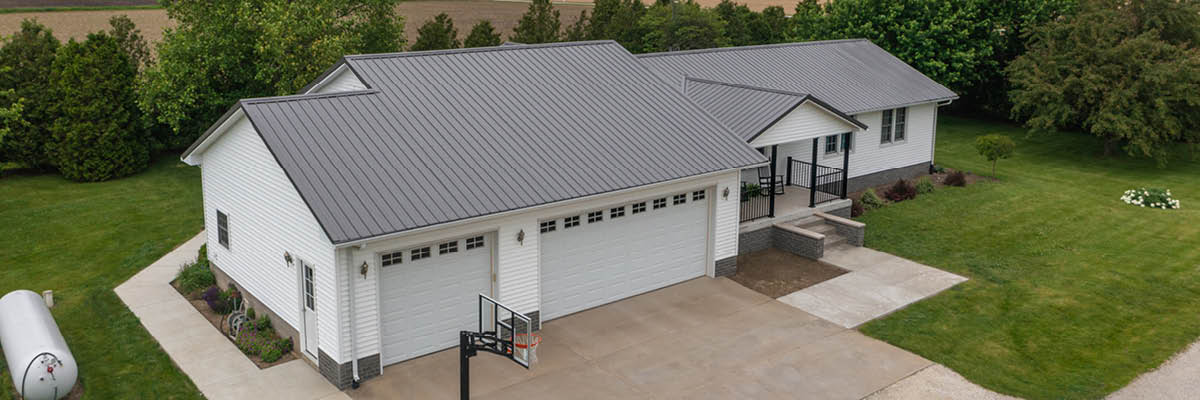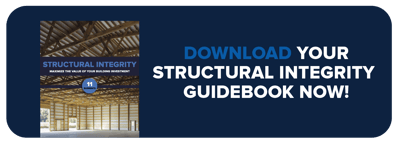Posts | Videos | Residential Buildings | Repairs & Renovations
7 Most Common Residential Metal Roofing Myths
Cori grew up on her family's small grain and livestock operation in Northwest Indiana. In 2018, she graduated Summa Cum Laude with a Bachelor's degree in Business Administration & Marketing from Marian University Indianapolis. Having shown beef cattle for 12 years at the county, state, and national levels, Cori chose to pursue a career in agriculture. Today, she serves as the Marketing Content Creator on the FBi team. In her free time, Cori enjoys spending time with family and friends, watching sports, listening to live music, and traveling.
Your house needs a new roof, and like other building materials, the options are abundant.
Asphalt shingles. Clay. Concrete. Metal. Slate. Wood shakes.
After some research, you’ve narrowed it down to asphalt shingles and metal panels. You’re leaning towards the latter, but you have some reservations thanks to the World Wide Web.
There are a lot of misconceptions about metal roofing floating around the internet. Sometimes, these myths cause people to overlook this advantageous roofing material.
Since FBi Buildings can install metal panels on residential homes, we decided to address the most common metal roofing misconceptions.
More facts and less fiction will help you consider (or select) a different option rather than replacing the current roof with the same material. Let’s start debunking, shall we?
If you don't have time to read this article, you can download the "Metal Roof Fact vs. Fiction Infographic" to read later.
7 Most Common Pole Barn Metal Roofing Myths
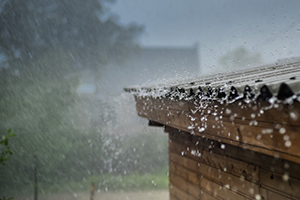
Myth 1: Metal roofing is loud when it rains.
We’ve all heard the preconceived notion that metal roofing is loud when it rains.
In some situations, this statement is true. For instance, I have fond memories of helping my father and grandfather work on farm equipment in their tool shed. When a summer storm rolled in, the pitter-patter sound of rain was deafening.
But you shouldn’t expect the same noise level from your house. For example, residential metal roofs are designed to be no louder than asphalt shingles.
The following factors play a role in ensuring your metal roofing is quiet:
- Roof decking: If metal panels are attached directly to the purlins, noises from hail or rain will be noticeable. There is no buffer zone, such as roof decking, to muffle the sound. This sheathing is composed of Oriented Strand Board (OSB) or plywood. It lays on top of the trusses and supports the weight of the roofing material.
- Insulation: Building insulation can reduce noise. You can install insulating materials above or below the roof decking and between purlins. Adequate thermal movement (or lack thereof) also affects the noise level.
- Expertise: The best way to ensure your metal roof minimizes external sounds is to hire a knowledgeable contractor or pole barn builder. Metal is carefully flashed to meet your roof style. There is little to no room for errors, so trained carpenters should handle the installation.
Do you want to hear the difference between shingles and metal roofing? Then, watch the experts at McElroy Metal debunk this prevalent myth in the video below.
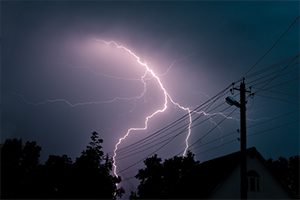 Myth 2: Metal roofing attracts lightning.
Myth 2: Metal roofing attracts lightning.
We’re familiar with the story of Benjamin Franklin discovering electricity and the subsequent invention of the lightning rod.
This piece of copper or aluminum is attached to the top of a post-frame building and prevents damage. When lightning strikes the metal rod, an electric charge is safely transferred to the ground.
The purpose of lightning rods (and metal roofing) is often misunderstood. Some people believe metal attracts lightning strikes. In reality, metal acts as a conductor and channels lightning away from the structure.
Therefore, metal roofing doesn’t increase the chances of your house being struck by lightning.
According to the Metal Construction Association, “the probability for a building to experience a lightning strike is influenced by a few significant factors:”
- Area Topography: Structures located on mountains or hilltops are more likely to be struck by lightning since they’re closer to the strike area.
- Building Height: Tall structures are more likely to be struck by lightning than shorter ones.
- Building Size: Structures that cover a larger surface area are bigger targets for lightning strikes.
- Thunderstorm Frequency: Certain geographic areas are more prone to storms that generate lightning.
If you’re worried about lightning damage, you should consider installing metal roofing. This building material is non-combustible, so it won’t catch fire like asphalt shingles.
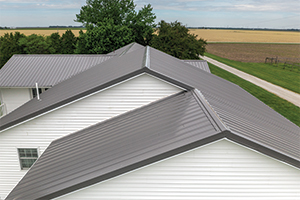 Myth 3: Metal roofing is easily susceptible to damage (i.e., dents).
Myth 3: Metal roofing is easily susceptible to damage (i.e., dents).
As mentioned above, metal is highly durable compared to other roofing materials.
When properly installed, a metal roof can withstand high winds. Most metal panels are interlocked, preventing them from separating and damaging others.
Shakes, shingles, and tiles overlap and rely on gravity to hold them in place. This method could be an issue in extreme weather conditions.
Speaking of extreme weather, hail damage is a concern for potential metal roof owners. Hail can damage any roofing material, but metal is less likely to dent or ruin your curb appeal.
Don’t believe us? We tested how well our pole barn steel could resist damage from hail, rocks, and other objects.
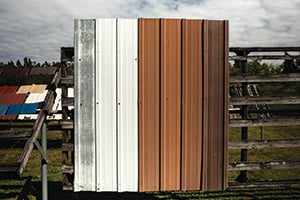 Myth 4: Metal roofing will rust.
Myth 4: Metal roofing will rust.
Another area of concern for homeowners is rust. This phenomenon is inevitable with metal.
One way to prevent corrosion is to use rust-resistant alloys, such as galvalume and galvanized steel.
First, galvanized steel is coated with a thin zinc layer (60, 90, or 100 ounces). This chemical element protects the metal panel from harsh components that cause corrosion.
Eventually, the zinc layer will fade. Now, you’re probably thinking, “Wait a minute, isn’t that a bad thing?” Remember, the zinc sacrificing itself in the event of a scratch stops the spread of rust.
Second, galvalume steel is glazed with zinc and aluminum by a continuous hot-dip process.
The alloy mixture consists of 45 percent zinc and 55 percent aluminum. It combines the protective properties of both chemical elements for a stronger coat.
Both substrates prevent rust, but galvalume outranks galvanized steel in terms of long-term protection.
Selecting a durable paint system will also make a world of difference. We highly recommend purchasing metal panels coated with polyvinylidene fluoride (also known as Kynar 500®).
Its unique formula contains one of the strongest bonds known to humankind. A mixture of fluoropolymer resin and ceramic pigments produces excellent resistance to weathering and fading.
Myth 5: Metal roofing will increase my energy bill.
Contrary to popular belief, metal is one of the most energy-efficient roofing materials on the market. It reflects heat in higher temperatures and retains heat in lower temperatures.
Per the Metal Roofing Alliance, you can save up to 40 percent in energy costs.
Whereas asphalt shingles are available in darker/duller colors, which attract and absorb ultraviolet radiation.
The heat can be transferred to the building, causing your cooling system to work overtime. Moreover, extreme heat can damage asphalt shingles.
Myth 6: Metal roofing is too heavy for stick-built construction.
This misconception is laughable because metal is well-known for its lightness. As a result, it’s easier for carpenters to transport and install.
Plus, metal doesn’t place unnecessary stress on a building. Structural integrity is the most crucial factor to consider when roofing your stick-built house.
As the structure ages, a roof with less weight will prevent structural movement and subsequent damage.
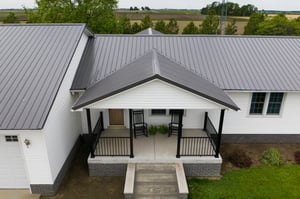 Myth 7: Metal roofing is too expensive.
Myth 7: Metal roofing is too expensive.
It’s true metal roofs aren’t cheap, but they’re worth the investment. While you have to pay more upfront, your dollars will go farther in the long run.
Since metal roofing can last 30 to 50 years, you won’t have to replace the panels as often as asphalt shingles. One metal roof can outlast at least three shingle roofs.
Editor’s Note: You may qualify for premium reductions through your insurance provider or tax credits for installing energy-efficient properties.
Will You Install Metal Roofing on Your Stick-Built Home?
Your house is a significant investment, so you should select a roofing material that will last. Despite the naysayers, metal will do just that. The initial cost may sound daunting, but it’s durable and energy-efficient.
At FBi Buildings, we’re here to help you choose the right roofing material for your home improvement project.
Do you have more questions about residential metal roofing not covered in this article? If you need help designing and planning, please contact FBi Buildings at 800.552.2981 or click here to email us. If you’re ready for a price, click here to request a quote, and a member of our Customer Engagement Team will help you determine the next steps of your project.
